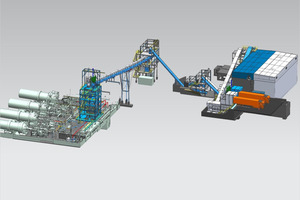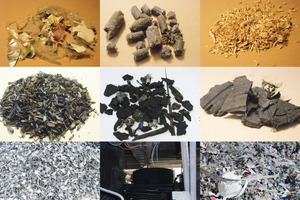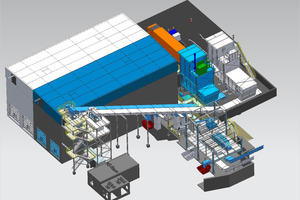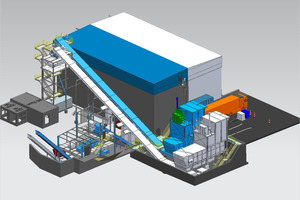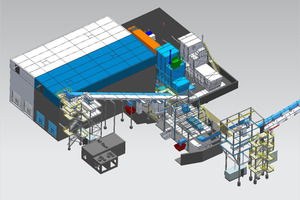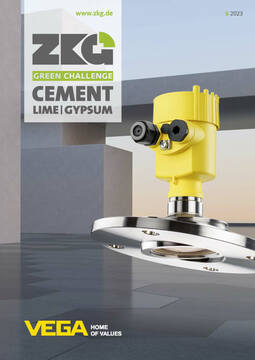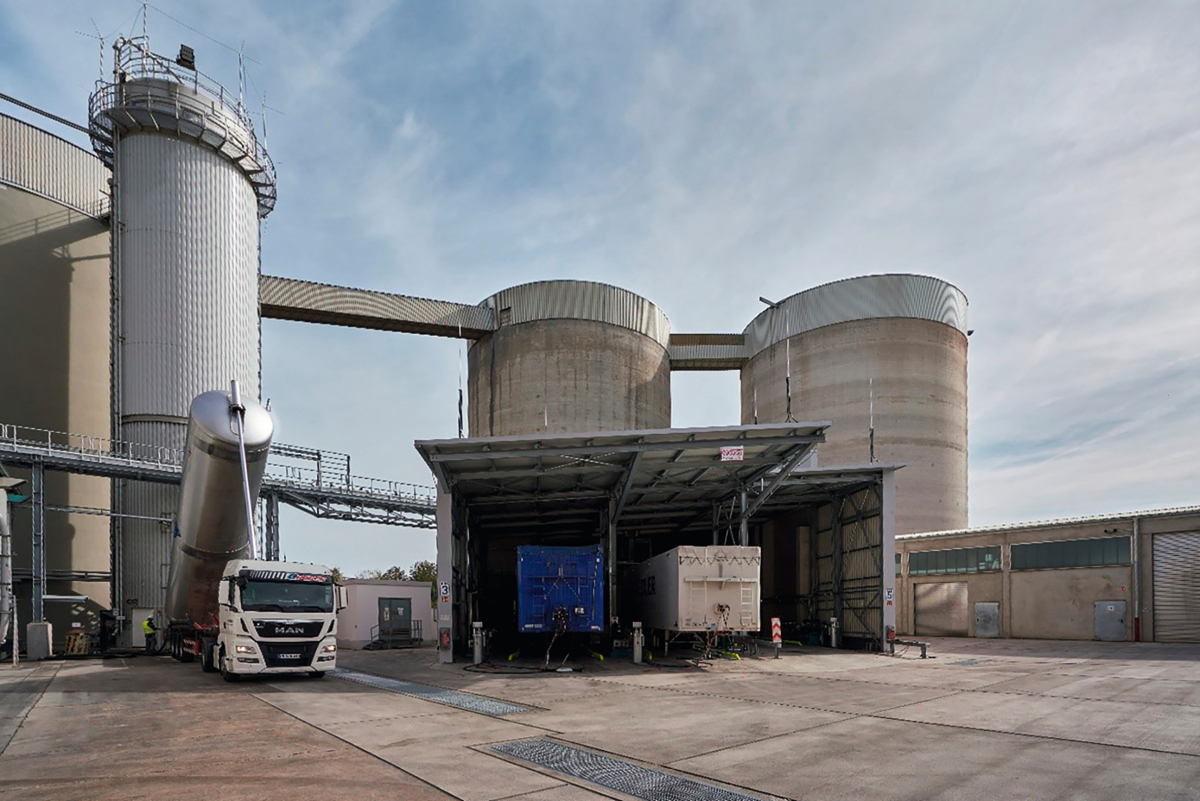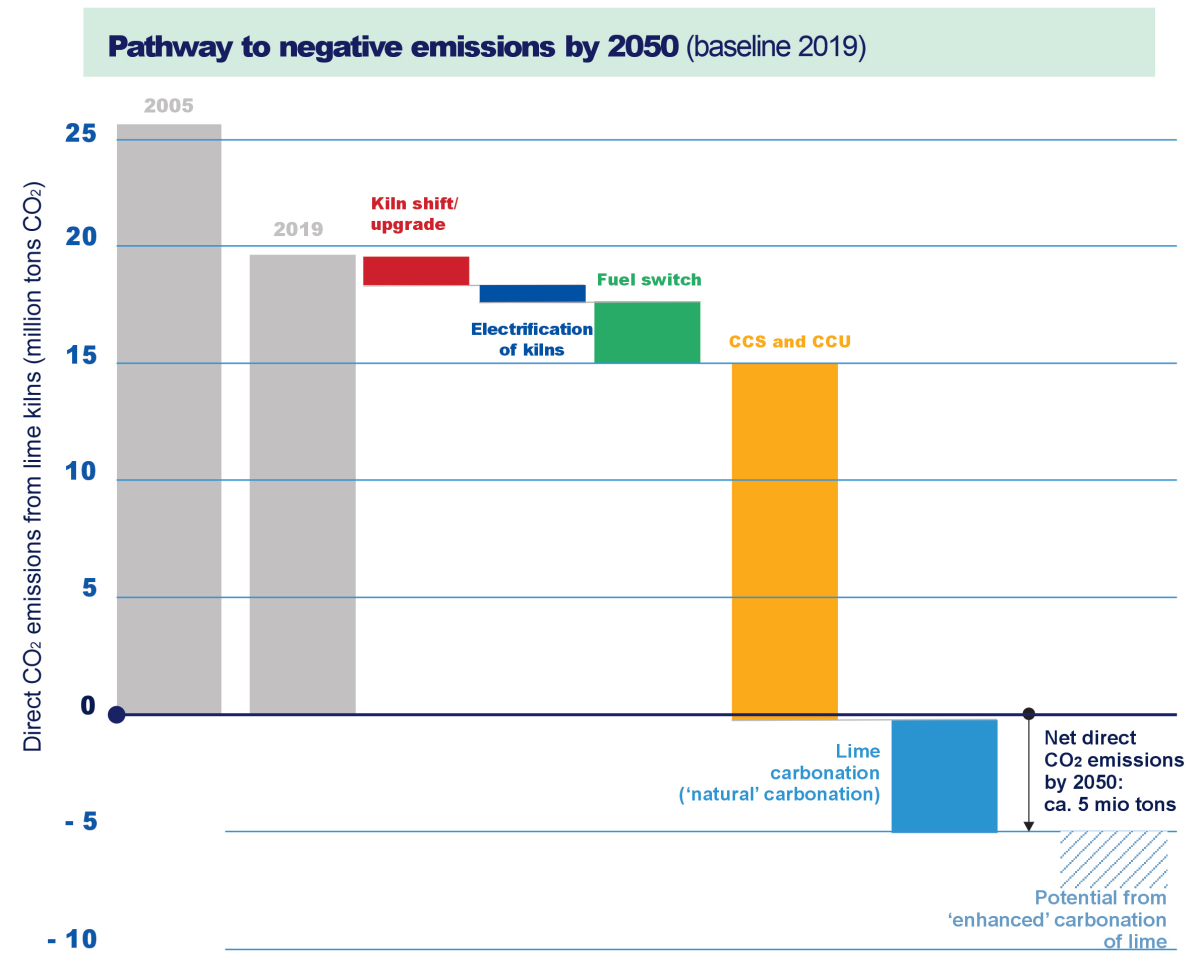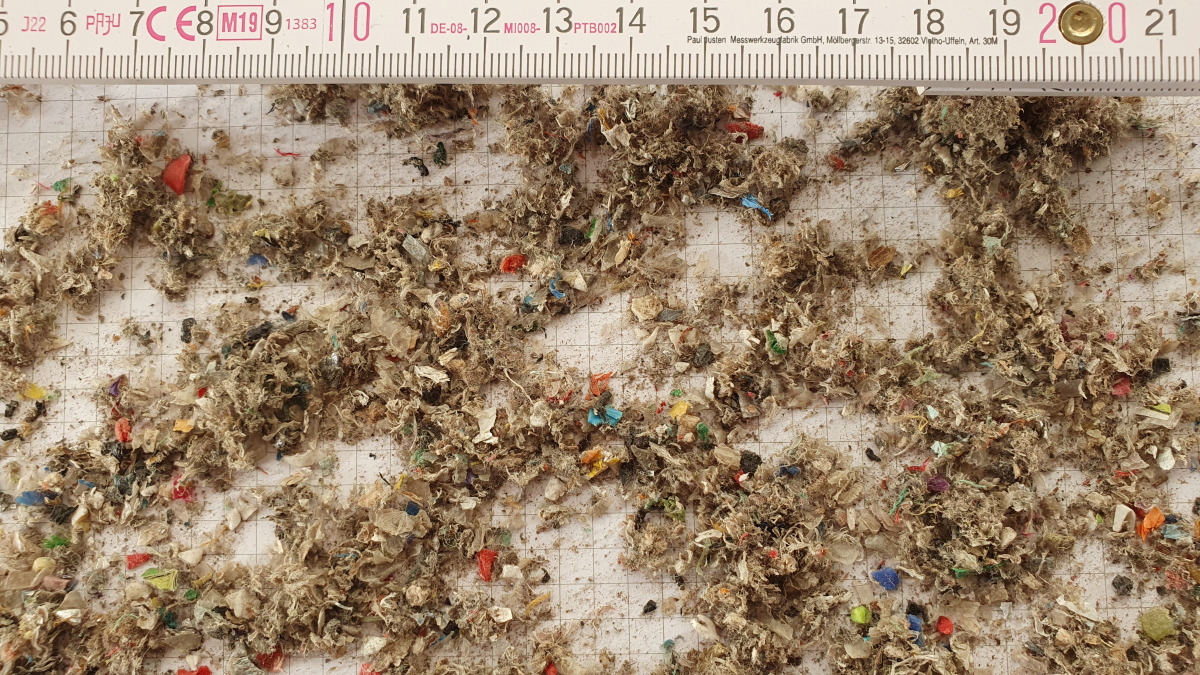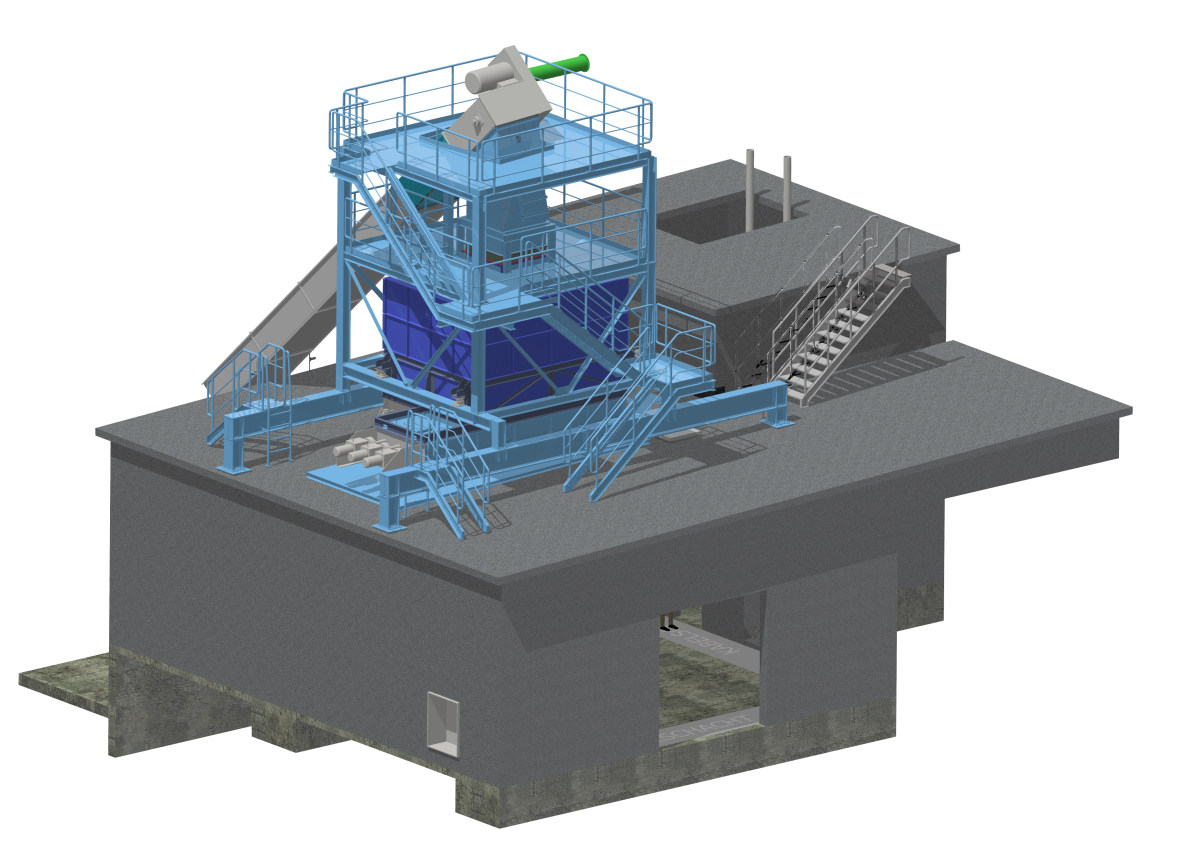Pioneering alternative fuel solutions in the lime and cement industry
The modern lime and cement industry places great emphasis on the utilization of alternative fuels as a means to address environmental concerns and optimize resources. Recognizing the potential benefits, Intercem actively integrates alternative fuels into its projects.
As the contracted party for the project, Intercem assumes the responsibility of engineering, supplying, and installing a cutting-edge secondary fuel plant on the factory premises of its German customer. This state-of-the-art plant is specifically designed to handle fluff and alternatively biomass, while the existing pilot plant continues its operations. The primary objective is to ensure a seamless process of receiving, storing, and dosing fluff into three out of the four rotary kilns at the site, known as step 1. The expansion of the dosing unit with the feeding line for the fourth kiln is planned for a subsequent phase, referred to as step 2.
The process begins with the delivery of fluff material to a tailor-made truck receiving station, after which it is smoothly conveyed to two spacious 1250 m³ storage boxes, allowing for continuous material flow. From there, the material is discharged and conveyed to strategically located dosing systems on the burner platform. Through the meticulous sorting process, Intercem ensures the removal of any foreign matter present in the fluff. Additionally, an advanced disc screen separates oversized material from the main process flow. The material is then efficiently transported to the feeders and three dosing units, precisely supplying the main burners of the rotary kilns, taking into account an optimised feed routing, which is adopted to the special requirements.
To support the project and remain at the forefront of industry advancements, Intercem has carefully selected specialized companies that provide the necessary advanced plant components and accompanying documentation during the planning phase. The commitment to meticulous planning is evident as they have already conducted a preliminary structural analysis based on the data collected during the site survey. This analysis enables Intercem to determine a preliminary bill of quantities, offering an initial estimate of the required materials and resources. Moreover, Intercem executes a detailed planning phase, incorporating any necessary changes to ensure compliance with the specified structural specifications.
Furthermore, the plant equipment is purposefully designed to effectively process biomass, specifically 8 mm diameter and 20 mm length pellets. This forward-thinking approach underscores its dedication to sustainability and the long-term adaptability of the plant to potential future fuel requirements. The aim of utilizing alternative fuels such as biomass is to minimize environmental impact, reduce carbon emissions, and promote resource efficiency in the lime and cement industry.
As the project progresses, Intercem‘s team of experienced project engineers assumes a critical role in overseeing and managing the installation of the new secondary fuel plant. They are responsible for coordinating and supervising the implementation process while closely collaborating with the specialized companies providing the necessary components and documentation. Leveraging their technical expertise, the project engineers thoroughly analyze the data collected during the site survey, conduct comprehensive structural analyses, and ensure all project requirements are met.
During the planning phase, Intercem’s project engineers meticulously review the structural specifications, working hand in hand with the specialized companies to make any necessary adjustments. This guarantees the seamless integration of the equipment and systems. Throughout the project, they face various challenges, such as coordinating deliveries, managing unforeseen issues, and maintaining compliance with safety and quality standards. Their problem-solving abil-ities, attention to detail, and effective communication with both the specialized companies and the customer serve as crucial assets in ensuring the success of the project.
In summary, as the contractor for the project, Intercem is fully committed to the successful installation of the new secondary fuel plant. With a team of experienced project engineers at the helm, they oversee the project‘s progress, tackle challenges head-on, and ensure that the plant is efficiently designed and implemented. The unwavering focus on sustainability, resource optimization, and the utilization of alternative fuels underscores the dedication to providing forward-thinking solutions that meet the long-term needs of their customers and contribute to the success of their operations in the modern lime and cement industry.
Target
The target of the above project is to successfully engineer, supply, and install a new secondary fuel plant on the factory premises, ensuring a seamless process of receiving, storing, and dosing fluff while incorporating alternative fuels and promoting sustainability in the lime and cement industry.
Benefits
Environmental Benefits: By integrating alternative fuels and optimizing resource utilization, the project helps reduce carbon emissions and minimize environmental impact in the lime and cement industry.
Resource Optimization: The efficient handling, storing, and dosing of fluff material allows for optimal use of resources, ensuring a continuous material flow and maximizing fuel efficiency.
Sustainability: The project demonstrates a commitment to sustainability by incorporating biomass processing capabilities, promoting the use of renewable energy sources, and ensuring long-term adaptability to potential future fuel requirements.
Operational Efficiency: The strategic location of dosing systems and meticulous sorting pro-cesses enable smooth operations and improve the overall efficiency of the plant with the highest precision of dosing accuracy.
Challenges
Initial Investment: Implementing a new secondary fuel plant and integrating advanced technologies can require a significant upfront investment. This may pose a financial burden for the company.
Technical Challenges: Introducing new equipment and systems into an existing plant may present technical challenges during the installation and integration process. This could result in delays or unexpected complications that require additional resources and expertise to address.
Operational Complexity: Managing a complex system involving storage boxes, sorting processes and multiple dosing units can increase operational complexity. This may require additional training and maintenance efforts to ensure smooth and efficient operations.
Intercem will be responsible for handling the project from receipt of order to completion of commissioning on an EPC basis from one hand.
Share of delivery and services customer
Civil engineering, civil works and a few parts
of minor priority are not part of Intercem’s
scope of services and will be executed by the customer.
Time frame: Start of production is scheduled for the first quarter 2024. It is estimated that the project will be finished within 50 weeks.
Project procedure
After having finished the scheduling, the corresponding flow sheets will be prepared. Numerous engineering meetings in person as well as online ensure an optimal cooperation and coordination between the partners.
Construction will start with the assembly of the truck unloading station. Assembly of reception box, screw floor, filter system, drag chain conveyor and the steel construction including the cladding will take about 6 – 8 weeks.
The assembly of the fuel storage will start at the same time with the steel structure roof of the storage hall. The steel structure of the drag chain conveyor and the staircase tower will follow and be completed with the cladding of the storage hall. Maintenance hoist, drag chain conveyors and screw conveyor and loader/reclaimer will the set up in parallel.
The assembly of the screen building will take place at the same time.
The steel structure for the transfer tower and its cladding are scheduled with 6 weeks and finally, the fuel dosing will be tackled. The existing burner building will be opened. Then the steel structure for the dosing and burner building will be integrated, followed by the cladding.
In parallel, the blower will be installed and after that, the dosing system with rotor weigh feeder. The last step will be the installation of the dedusting filter for the air supported belt conveyor. All in all, the assembly time is calculated with 15 weeks.
cement kilns. In: ZKG International 6-2014, pp. 44-49

